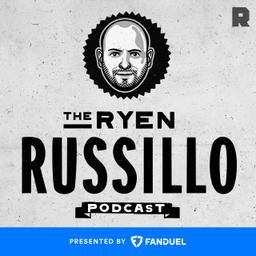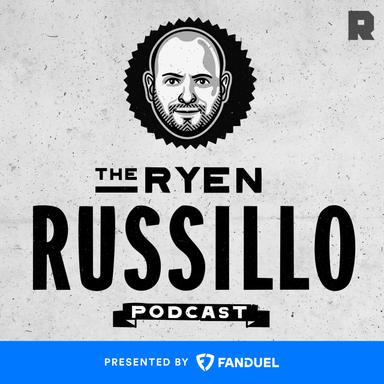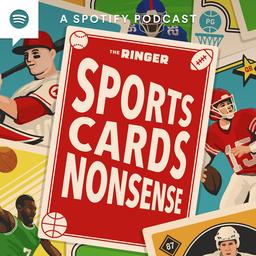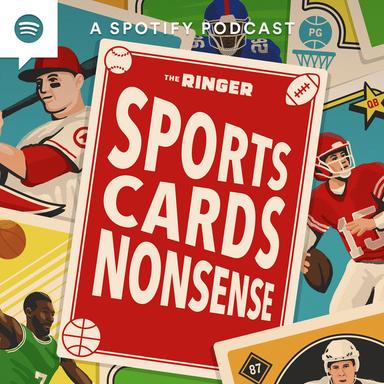
When Paul Skenes arrived at the Major League Baseball Players Association board meetings in Scottsdale, Arizona, in December, he didn't know that there was such a thing as the executive subcommittee. Alongside the 30 team representatives, the eight-man subcommittee gives the union a 38-person leadership group that votes on decisive matters. For the first two days of meetings, players sat through long presentations on the state of the industry and the upcoming negotiations for a new collective bargaining agreement. Skenes diligently took notes on all of it.
“I learned a lot over the past year,” Skenes says during spring training two months later. “I’m still learning now.”
By the time he left Scottsdale in December, the 22-year-old reigning National League Rookie of the Year had been elected by the 30 team reps to serve on the subcommittee he had just found out about.
Skenes pitches in Pittsburgh and cited the legacy of Roberto Clemente as his motivation to get involved and try to make an impact off the field. But beyond that, he simply understood that the mantle of leadership would likely find him eventually anyway. The truth is that Skenes already does have an impact in Major League Baseball that extends far beyond the Pirates’ record on days he starts.
“Whether I like it or not, I think I’m in a position of leadership in Major League Baseball,” Skenes says. “Guys are going to listen to me. So I think it’s better to lean into it and have a position rather than kind of hiding from it.”
Skenes is standing inside a cramped hobby shop along a highway in Florida as he says this. Out front are the Sarasota sheriff and a small cavalcade of black SUVs. Out back are throngs of fans packed into a tent to watch Skenes open packs of baseball cards as part of a Topps event, while organizers implore adults to let kids go in front and everyone to stop begging for autographs.
Skenes doesn’t collect baseball cards—“not at all”—and is unequivocal when asked whether it’s becoming more of an interest of his.
“No,” he says.
He’s here anyway, though, because “it’s kind of part of the job at this point.” Maybe not the job of a starting pitcher on a bad team, but rather that of the budding face of baseball. (With or without the signature mustache.)
In light of all his other quasi obligations, serving on the executive subcommittee for the two years leading up to an all-but-assured lockout (in a quirk of timing, Skenes’s term will end just after the current CBA expires, but the hope is for some continuity among leadership) could be considered prohibitively demanding in terms of time commitments. After all, baseball is grueling even for guys who take the field only once every five days. Skenes hasn’t even been in the bigs for a year, and now he’s adding labor activism and outreach to his schedule.
“Because somebody’s got to do it,” he says, “and I do trust myself to do it.”
Before I can leave, someone from Skenes’s agency pulls me aside to chastise me for asking baseball questions at a baseball card event. That’s what the clubhouse is for, I’m told. He’s a tough guy to find time with in the clubhouse, I respond.
A year ago, I went to a Spring Breakout game featuring high-profile minor leaguers and watched the crowd at the Pirates complex ebb and flow along the fence in response to Skenes’s movements on the other side. This was mere months after he’d been selected first in the 2023 draft, which was just weeks after he won Most Outstanding Player for his role in leading LSU to the College World Series title. With the appropriate caveats for prospect writers and people really in the know, the hype had beaten traditional media to Skenes. Which is a sentence that you can’t let stand without acknowledging that, while at LSU, Skenes started dating gymnast Olivia Dunne, the most followed NCAA athlete; she has more than 8 million followers on TikTok and 5.3 million on Instagram.
Skenes says that Dunne is his best friend.
“People come and go,” he says, like someone who’s experienced the full range of ramifications from rapid, life-changing fame. “She stays.”
Now, so does the spotlight.
When he was a rookie, stories about Skenes centered on the unlikely trajectory he took to pitching for LSU in the College World Series in the first place—namely, he began his college career as a two-way player at the Air Force Academy. The 6-foot-6 SoCal native went from pitcher, catcher, and cadet to major league starter in just about two years. Skenes debuted for the Pirates in May 2024. His 12th big league start was at the All-Star Game. He threw 133 innings in his rookie season, surrendering 94 hits and just 29 earned runs. Among all pitchers who threw at least 130 innings last season, he had the lowest ERA and the second-highest strikeout percentage. In addition to winning Rookie of the Year, he finished third in National League Cy Young voting and even appeared on a Most Valuable Player ballot.
Yet perhaps the most remarkable thing about Skenes is that, as the coverage has scrambled to catch up to his fame, it has remained resolutely sold on the hype.
Skenes rocketed from next big thing to fully actualized ace with almost no time spent mired as the subject of doubt or discourse. He was never under the radar or overrated. If you pay attention to baseball, you’d probably heard of him before his big league career even started, and he’s done nothing but live up to that marquee status ever since.
The consensus take in baseball now is that he is one of the top three pitchers in the sport. And that might be underselling the expectations. The story lines going into his sophomore season are not about whether he can replicate his rookie success but about the new pitches he’s tinkering with and whether the Pirates are already guilty of squandering something special by not doing more to win while they still have him.
In the offseason, Skenes appeared on ESPN’s College GameDay, Late Night With Seth Meyers, and the cover of MLB the Show 25. Bidding for his MLB Debut Patch card soared to $1.1 million.
It’s tough to top two-way global sensation Shohei Ohtani in terms of mainstream appeal as a baseball player. Beyond the second coming of Babe Ruth, even the most talented stars in the sport rarely break containment. Yet Skenes seems almost anointed as MLB’s next best chance to get casual fans to see baseball players as crossover stars. That buzz—simultaneously deserved and contrived—has become palpable.
“It’s like having Shohei on your team. The guy’s a unicorn,” says Andrew McCutchen on the energy around Pirates camp this spring.
“I don’t think he tries to talk about it. We all know it’s there. He just manages it really well,” says Pirates pitching coach Oscar Marin about the many media demands Skenes shoulders. “That’s what makes him special, right? Paul is who he is because he can put blinders up.”
“I’ve asked him that question periodically,” says Pirates general manager Ben Cherington about whether it all ever feels like too much for his ace. So far it hasn’t been, although the beat writers say they saw a change in Skenes after the gauntlet of a historic All-Star appearance—vibe-wise, not on the mound, where his second half was somehow slightly better than the first. But Cherington understands that could change.
“He’s still human,” he says.
Skenes, for his part, says that over the past not-quite-a-year, he’s “gotten to experience some cool things, go to some cool places.”
The idea that Skenes is destined for game-changing greatness in both the short and long term is a natural response to the man himself. But it’s at odds with the recent sobering reality of baseball: Starting pitchers, already sidelined from most games by the nature of the role, have never been less relevant on a pure innings basis or less likely to stay healthy and available. Skenes is the undeniable star of the 2025 Pirates, but if you think of their season as a movie, he won’t be in that many scenes. (Unless his January line about being “ready to throw 240 innings” proves not to be hyperbole.)
In the offseason, the Pirates brought in Brent Strom to serve as an assistant pitching coach. The assistant part is surprising. The 76-year-old Strom is coming off an unceremonious ouster from the Arizona Diamondbacks, but he is something of a legend in the industry for his time helming the Houston Astros pitching staff that had so much October success. Marin himself advocated for bringing Strom on board and spearheaded the recruitment. He says the latter wasn’t hard. Strom himself hasn’t said as much directly, but people around the organization know that Skenes’s presence—along with that of other budding aces like Jared Jones and top prospect Bubba Chandler—is what attracted Strom to the Steel City.
“I think it was easy convincing him when it came to that,” Marin says. “I’m pretty sure Strom saw the roster and was like, Yeah, I can help this team out.”
The hope is that he’ll do so by teaching those fresh arms how to go a third time through the order, a rarity for modern starters. The knock on young pitchers these days is that they’re “throwers” more than “pitchers”—trained to be too focused on speed and stuff to game-plan effectively or hold anything in reserve for later innings.
“Yes, he is a power pitcher,” Marin says, acknowledging the potency of Skenes’s unsurpassed velocity and strikeout ability only begrudgingly, lest the label seem too limiting. “But I think he’s more than that. He’s already, in my eyes, getting to the point where he’s a complete pitcher.”
That includes expanding his arsenal. In a Zoom call two weeks after the season ended, coaches told Skenes that they wanted him to work on something more competitive in the zone for the sake of efficiency. A few months later, he showed up to camp with a cutter and a two-seam fastball.
“Having an outlier pitch is great,” Skenes says of his signature splinker, which had one of the best run values of any pitch in baseball last year. “But if you throw it all the time, it doesn’t become an outlier pitch anymore. So you have to use your pitches off each other.”
If you are Paul Skenes, you can will your way to a devastating new pitch. And perhaps, under the right tutelage, you can even flout the relentless trend of favoring relievers for high-leverage innings. But the real plague facing pitchers—siphoning away their time in the limelight not just incrementally but in huge, sometimes season-long swaths—is injury.
“It would be awesome if someone had a magic pill to predict when injuries happen,” Marin says. In the absence of that, the Pirates erred on the side of caution in Skenes’s first season. “I felt like we did a really good job with Paul, starting from the minor leagues going up into the season, of just making sure he had consistency behind his work and paying attention to the workload.”
That meant three- or four-inning starts in Triple-A and an average of 5.8 innings per start in the majors. Skenes has seen the ninth inning only once since he entered affiliated ball, and he’s never finished a game. That’s not unusual; 370 pitchers started a game in 2024, and only 25 of them ever finished what they started. Only three did it more than once. Yet despite leaguewide concern and caution, plenty of lightly used pitchers will be felled by injuries in the coming weeks and months. (Jones, Skenes’s 23-year-old rotation mate, is awaiting a prognosis after experiencing elbow discomfort this spring.)
The thought that any pitch could be your last for a long time to come, abruptly arresting your ascension to superstardom, would seem likely to engender some amount of angst. Right?
“No,” Skenes says with his characteristic bluntness. “One, it’s part of the game. But two, there are a lot of things that you can do to prevent it. So in terms of losing sleep at night, no. But a lot of what I do day-to-day—going to the training room, having a good strength program, watching my volume throwing-wise—all that is geared toward that.”
I like to ask pitchers this question—Are you worried about getting hurt?—even though the answers are often similar: classic athlete tunnel vision about what they can control. It reveals something, though, through the specifics of how they speak. Skenes, with his military-like enumeration and unwillingness to concede even a hint of doubt, reveals a way of thinking.
“Just being objective,” he says. “Looking for objectivity.”
Objectively speaking, the Pirates are not very good. They’ve finished last or second to last in a weak division eight years in a row. Their lineup is projected to be the fourth worst in baseball, which is why the team is projected to finish in a virtual tie for last in the NL Central again this season—but it’s a tight spread. FanGraphs gives them a slightly better than 20 percent chance to make the playoffs because, in the preseason projected standings, fewer than five wins separate them from the first-place-finishing Cubs. In other words, if the Pirates—whose estimated $90 million payroll is fifth lowest in MLB—had done just a little more this offseason, it could have made a real difference.
“I mean, obviously that’s what everyone wants, right?” says McCutchen, who debuted with the Pirates and garnered ROY consideration while Skenes was still in elementary school. “Especially when you have the talent that you have around. Capitalize.”
Cutch was in Pittsburgh—posting MVP-caliber seasons—the last time the Pirates made the playoffs, in 2013, ’14, and ’15. Back then, “we always said the same thing: Capitalize, capitalize, grow off it. Let’s get better. Let’s get more. We can do this.”
Because if you don’t, and the Pirates of the early 2010s didn’t, “you lose it,” McCutchen says.
“You lose it really quick. As fast as you get it, you can lose it. People don’t realize there is no let’s wait a couple years from now. Or in two years or in three years.”
By virtue of finishing atop the ROY voting, Skenes earned a full year of major league service. He has five more in Pittsburgh, and its track record with trading pitchers suggests that it could be fewer. It’s enough time to win, if ownership and the front office put forth a concerted effort to do so.
“It’s going to look a little different doing it in Pittsburgh than it is in some other places,” Cherington says, by which he means that if they win, they’ll do so the same way that they lose—with a low payroll. But of course, just as money gives the Mets and Dodgers an advantage in pursuing top free agents, the Pirates had an advantage in acquiring Skenes: No other team got a crack at him. The draft benefits bad teams by design, so that they don’t have to languish too long.
Skenes wants to do right by his team. In a spring scrum with reporters, he jokes about his relatively increased seniority inside the clubhouse in his sophomore season.
“Can’t go in there and call five team meetings in the first five days,” Skenes says. And then, after a beat, with a small smile: “I tried it, it didn’t work. I’m just kidding.”
But his ability to be an impactful leader—on the Pirates, in the MLBPA, and in baseball’s quest to become more nationally relevant—is tied up in how he performs as a pitcher, perhaps the most solitary role in all team sports. And what stands out from time spent talking to Skenes is the dispassionate objectivity with which he discusses his own uniqueness.
“My body moves, my hand moves differently than everybody else,” he says, when questioned about whether he ever asks other pitchers to show him their pitches.
It’s not so much a preoccupation with his own inherent greatness that comes across, but rather that he views being great as his job. For instance: Skenes prefers not to listen to music before he pitches, just podcasts or audiobooks.
(“I like American history.” “Civil War.” “Military,” Skenes says in response to efforts to drill down on specifics. And for the record, he reads actual books in the offseason.)
The most animated he gets during our conversation is when I express surprise that he doesn’t employ some sort of pump-up playlist before starts to get himself into the mystical, menacing starting-pitcher-who-can’t-be-so-much-as-spoken-to mindset.
“So many guys feel like they have to get themselves into that mentality,” Skenes says, stressing the subjectivity of such a belief. “I don’t believe that people need to pump themselves up, but some people choose to.”
Maybe it’s his Air Force origins showing, the idea that combat is best approached not in a state of hotheadedness but with practiced expertise.
“I don’t need to get pumped up before I go into a game,” he says. “I’ll just, I don’t know, do it hopefully 35 times this year. So it’s pretty routine.”



